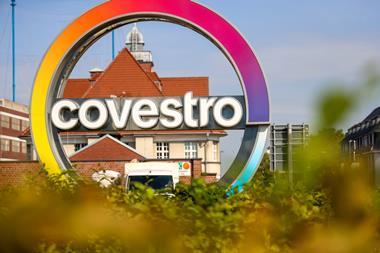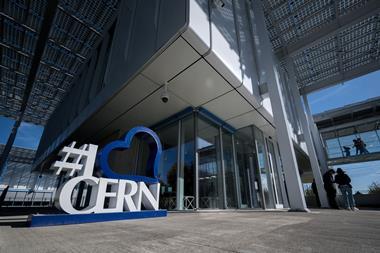How do you determine whether a new product will be considered a novel food by EU regulators? David Neville, technical specialist for functional ingredients at Reading Scientific Services Ltd (RSSL) explains the finer points of novel foods compliance.

According to regulation EU 2015/2283 on novel foods, the critical point to prove is whether or not the new product has been deliberately used as an ingredient or food, within the EU, before 15 May 1997. If not, then a novel food submission is required, where the product is defined within one or more of the ten categories, depending on the profile and use of the material in question.
For those producers and raw material suppliers who are still not sure if their product qualifies as a novel food, there are steps that can be taken before committing to a formal regulatory submission.
Under the consultation procedure outlined in Article 4, a company can ask the intended EU member state for its opinion and that state has the right to request feedback from others who may have a different view. Within this framework, it is it is essential to be able to demonstrate a history of consumption and that there have been ’no significant changes in the composition or structure of the food, affecting its nutritional value, metabolism or level of undesirable substances.’
a novel foods submission is […] a complex and rigorous process that requires robust and reliable data
While this does offer an alternative way to confirm the required legal status of new materials, it is important to note that the process can take up to eight months and its success rate is low - as evidenced on the EU’s novel foods consultation website. This means that serious consideration needs to be given to the fact that a considerable amount of valuable time could be wasted on a potential ‘lost cause’. Time that would arguably be better spent on making a full novel foods application in the first place.
That’s not to say that preparing a novel foods submission is the straightforward option. Far from it. This is a complex and rigorous process that requires robust and reliable data. Without meeting all the specified criteria to the required standard, organisations risk not even getting past the initial registration stage. In fact, the European Foods Safety Authority (EFSA) rejects far more submissions that it accepts, as can be seen by reviewing the agency’s online registration tracker.

So what is the best approach? Article 10 of the regulation defines the information required by the EU for novel foods authorisation. It also explains the role of EFSA, which is tasked by the European Commission to carry out a risk assessment of the novel food based on the dossier supplied by the applicant.
It is vital that this detailed technical information covers the specified product parameters including production process, purity, toxicology, tolerance in humans, shelf life, stability in food matrices, doses and intended uses. In addition, all analytical procedures require the use of correctly validated methods, which should be carried out by an accredited laboratory facility, such as RSSL.
Novel foods in action
There’s no doubt that there is a genuine drive to introduce new novel ingredients and products into the European food market. At the same time, navigating the regulatory landscape has never been so important, which is why RSSL’s analytical expertise and detailed knowledge of the novel foods application process is so valued by their clients.
Understanding when and why a new product may be classified as a novel food is part of this expertise. For example, a flour that has been used within Europe as a regular ingredient has historical use, so is not a novel food. However, if you begin to fractionate that flour to get specific proteins that may be non-allergenic or provide a certain functionality, then you step into novel foods territory.
the aim is to match, or improve on, what is already available on the market - and therein lies the challenge
Similarly, the purification and modification of protein pulses - such as peas and beans - is a popular food production process. Acid hydrolysis enzymes (proteases) are generally used to break down proteins into smaller fractions, which are potentially more digestible or have greater functionality. If the proteins become highly chemically defined, however, the issue of novel foods comes into play.
On the other hand, it may be that an ingredient is already authorised for use in beverages but not baked goods. In which case, you have to apply for an extension to a current authorisation to accommodate the new food matrix. For example, an oil made from the micro algae Schizochitrium species was approved for use in a variety of applications following a series of novel foods submissions.
It is also important to note that for some applications, the EU may not grant novel food status if the product is considered to be the same as existing commercial ingredients or foods. The aim is to match, or improve on, what is already available on the market - and therein lies the challenge. In all cases, however, safety is the prime concern - as can be seen by reviewing two distinct focus areas.
Nanomaterials
For all insoluble and particulate novel food ingredients, EFSA now requires you to demonstrate the absence of nanoparticles as part of the safety assessment. If they are found to be present, further safety studies are mandatory. Titanium dioxide, for example, is commonly used as a whitening agent in coffee creamers, chewing gum, beverages and hard-shell coated chocolate products. Indeed, the US Center for Food Safety database shows just how frequently they are used in North American foodstuffs.
the physical and chemical properties [of nanoparticles] are subject to high levels of scrutiny
This is largely due to the fact that nanomaterials, engineered or not, possess properties that are different to bulk materials. Their distinctive structure and functionality offer advantages as flavour carriers, enhancers and moisture absorbers. However, global regulatory bodies are concerned about their interactions with the human body and potential carcinogenic effect, which means that their physical and chemical properties are subject to high levels of scrutiny.
For foods aimed at the European market, the use of specific EFSA analysis and testing methodology is essential. So too is an understanding of the agency’s new draft guidance setting out the criteria for what is and is not considered novel. RSSL is not only able to interpret the data that is required but also carry out the highly complicated tests via a variety of techniques including light microscopy, volume specific surface areas, dynamic light scattering and scanning electron microscopy.

Cannabidiol and cannabis
One of the most active categories in this space is cannabidiol (CBD). The market has experienced huge growth over the last few years, but CBD was only officially classified by the EU as a novel food in 2019. This has created a difficult situation in that products are already commercially available. In the UK, the Food Standards Agency has sought to enforce the ruling by announcing that all CBD products must have submitted a validated novel foods authorisation by 31 March 2021. If not, they will be removed from sale. In practice, this means that submissions need to be made on 1 January 2021 to allow time for the process to be well underway.
RSSL can help by generating the relevant analytical data to confirm product safety and stability for novel foods application. They have, for example, developed an assay method to quantify the presence of CBD and so ensure label claims and purity specifications are within legislative levels and accurate. Hemp plants can also draw heavy metals from the soil, so RSSL’s elemental impurities lab can check CBD products for traces of this pollutant which is known to be detrimental to human health.
Industry-leading guidance
Ultimately, all novel foods must be safe for human consumption which means significant work will be required to provide the necessary evidence. Getting the strategy and the data right first time is key for the creation of a comprehensive novel foods dossier; helping to smooth the way for pre-market authorisation, commercial application and continued product innovation.
About RSSL
Reading Scientific Services Limited (RSSL) is a contract research organisation (CRO). We lead the future of innovation in food and consumer products with our team of more than 300 research scientists and product developers. Our innovation and scientific expertise has helped our partners to develop and manufacture products that consumers love and trust in more than 50 markets across the globe. We take a collaborative, agile approach and work alongside our clients as a trusted partner, helping to bring ideas to life and deliver innovative solutions from product concept to pilot plant and full scale manufacture - whether you require short project-based support or fundamental research to assess and analyse wider market issues, RSSL will work with you to arrive at a consumer-winning solution that will put your brand at the forefront of the food industry. Find out more


















No comments yet